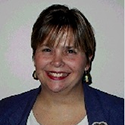E-Healthcare: Getting It Right The First TimeE-Healthcare: Getting It Right The First Time
Are there too many cooks in the national e-healthcare kitchen? Johanna Ambrosio worries we may be frittering away a great opportunity to create a coherent infrastructure.

I fear we're letting a great opportunity slip away: the potential to build a coherent national infrastructure to keep and carefully disseminate electronic healthcare data.
At this point, there are a bevy of projects and initiatives and no standards in place that all will use to create a national e-health system as opposed to state-wide or regional projects. According to a report put out by the eHealth Initiative Foundation in August, there are now 25 'fully operational' health-exchange systems, up from nine last year, with more than 100 projects or pilots going on in 45 states and the District of Columbia.
There are multiple bills and committees tackling the problem in both the House and the Senate.
While it's great that so much energy and focus is on this issue, as there should be, I'm hoping that the office of David Brailer, the Health and Human Services (HHS) national coordinator for IT appointed by Presidential mandate, can move more quickly to put some standards in place. Under the contracts awarded in mid-November, four groups of companies are going to be developing a proposed e-health architectural blueprint over the next year.
Meanwhile, states like Wisconsin, Massachusetts, New York, and many others are also starting work on their own architectures and systems. On the federal level, there's Dr. Brailer's office, and there are the Health Resources and Services Administration, the National Health Information Infrastructure, and the Agency for Healthcare Research and Quality, all players in e-healthcare. They're all under the HHS rubric, so hopefully they're all talking to each other. But then you've got the Veterans Administration and the Department of Defense, also with e-healthcare initiatives in places like Iraq and beyond.
There may be too many cooks in the kitchen. I fear that without a greater level of standards activity that we're going to wind up with 50 different statewide systems, and perhaps a few regional ones, that can't easily exchange information with each other if at all. Particularly critical is the need for an XML foundation that can serve as a lingua franca across systems, while allowing for some regional or state variations depending on their needs. I'm hoping that all the players will be able to get that done soon so that all the railroad tracks will align. That way, if someone from Maine winds up in a hospital in California, there will be a chance that their health records can follow them.
It's beginning to look like the rebuilding efforts from the recent hurricanes could serve as models for how to do this. Private health insurance companies said recently that they were able to re-create medical records for many people displaced by Hurricanes Rita and Katrina by digging into their own databases of claims records and other information. HHS has now gotten involved via a task force to help create e-records as the region rebuilds; it's also asked Louisiana's health department to develop a prototype e-record.
This is a great start; here's hoping we can learn from each other as we go, put aside politics for the greater good, and wind up with an e-health system that can be truly national within the next decade or two.
About the Author
You May Also Like






